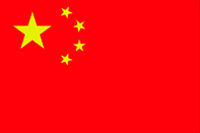Explore various spinning methods for core-spun yarns.
Release time:
2025-02-26
Author:
Source:
Abstract
Schematic diagram of core-spun yarn structure
Core-spun yarn—a unique composite yarn—consists of an outer fiber layer tightly wrapped around a core yarn, resulting in a dense structure and uniform yarn characteristics. Thanks to its core-and-sheath construction, core-spun yarn not only transcends the single-function limitations of conventional ring-spun yarns but also combines the aesthetic appeal and hand feel of the outer fibers with the superior performance of the core yarn. This complementary combination of advantages gives core-spun yarn an overall superior quality, making it highly popular among consumers. Next, we will introduce several methods for spinning core-spun yarn.
Among these methods, the spinning process for ring-spun core-spun yarn has attracted considerable attention. By modifying a conventional ring spinning frame and adding a set of continuous filament feeding devices, the continuous filaments are fed directly from behind the front roller without undergoing drawing. Meanwhile, the covering fibers are fed in the traditional ring-spinning manner—unwound from the roving bobbin and passed through a tapering nozzle—then drawn and merged with the continuous filaments at the front roller, where they are wrapped around the filaments. Subsequently, the combined yarn is twisted and wound together to finally produce the core-spun yarn.
Due to its wide range of producible yarn types, practical raw material options, and high-quality yarn performance, ring-spun core-spun yarn has become the most commonly used and most mature core-spun spinning method. However, during the ring-spinning process, the core filament of the core-spun yarn sometimes becomes exposed, which prevents proper dye uptake during dyeing and severely affects the fabric's end-use performance.
To address this issue, the Siro-spun core-spun yarn technology was developed. Building upon the traditional ring spinning process, this technology introduces an additional core-yarn guide device and modifies the feeding method—from single-roving feeding to dual-roving feeding—while incorporating a specially designed double-bell-mouth configuration to adjust the spacing between the two rovings. During the spinning process, after being drawn through the drafting zone by the rollers, the rovings merge and are twisted together at the nip of the front rollers with a continuous filament fed in via the guide device positioned midway between the two rovings. The combined yarn is then wound onto the bobbin by means of a guide hook, thus producing the Siro-spun core-spun yarn.
In the spinning process of Siro-spun core-spun yarn, the two slivers maintain a certain distance from each other and actively wrap around the core filament. After undergoing two twists—once above the convergence point and again at the convergence point itself—the internal stresses within the yarn are evenly distributed. As a result, the resulting yarn exhibits a tightly packed structure, stable quality, and superior performance in all aspects compared to conventional core-spun yarns.
Next, we’ll introduce compact-spun core-spun yarn.
Compact spinning is a new ring-spinning technology that uses negative-pressure airflow and corresponding mechanisms to eliminate or reduce the spinning triangle zone, thereby effectively controlling fiber movement and significantly minimizing the generation of edge fibers and floating fibers. As a result, the occurrence of fuzzing in the yarn is markedly reduced, tensile strength is enhanced, and the number of cotton knots is also decreased accordingly. Compact core-spun yarns produced using compact spinning technology exhibit a substantial reduction in fiber fuzziness, while simultaneously improving the sliding resistance of the covering fibers against the filament yarns. This leads to clearer stitch definition in knitted fabrics during garment production and allows for reductions in yarn count and twist level, making the resulting fabrics softer and more comfortable.
Now let’s take a look at rotor-spun core-spun yarn.
It achieves this by modifying a conventional rotor spinning machine, using a hollow spindle for the spinning cup and adding a filament unwinding device. During the spinning process, the filaments enter the spinning cup through the axial hollow spindle and, under the high-speed rotation and twisting action of the spinning cup, combine with short fibers to form a rotor-spun core-spun yarn. The yarn is then drawn out by a drafting roller and wound onto a bobbin. It is worth noting that in the production of rotor-spun core-spun yarns, the filaments do not have free ends; therefore, the core filaments are not twisted. In other words, the filaments are wrapped around the high-speed rotating fiber sliver rather than being twisted after being enveloped by the fiber sliver.
Long-term commitment to the development and production of a series of core-spun yarn devices, spandex core-spun yarn devices, filament core-spun yarn devices, double core-spun yarn devices and other products can be used on long and short spinning machines of different manufacturers. According to the classification of guide roller materials and processing technology, users can be provided with core-spun yarn devices with high, medium and low prices.
Double-core core-spun yarn is a composite yarn spun from two filaments as the core yarn and coated with one or more short fibers (such as cotton, hemp, wool, silk, polyester, viscose, etc.). Usually, elastic filaments and rigid filaments are used as the core yarn. The composite yarn not only gives full play to the high elastic characteristics of elastic filaments, but also has the tensile and wear resistance characteristics of rigid filaments, and maintains the surface characteristics of coated short fibers, it is one of the ideal yarns for popular stretch fabrics in China at present. The other is double-filament core-wrapped yarn, which is a core-wrapped yarn with two rigid filaments wrapped in the center of the yarn and one wrapped around the outside of the yarn. The composite yarn realizes that the two filaments have different positions and shapes in the yarn. One filament is wrapped in the middle of the staple fiber to form a core-wrapped structure, which can be less exposed to sunlight, to prevent the strength from decreasing, another filament and the yarn of the core-wrapped structure are wrapped together to form a wrapping structure, which provides good abrasion resistance for the yarn. The composite yarn is the best choice for the production of training clothing and gun clothing.
Jinzhong Jingwei Tianying Machinery Co., Ltd. has more than 20 engineering and management personnel, with all kinds of advanced production equipment, design and manufacturing and other advanced technological means, around the special parts and auxiliary devices of textile machinery, the enterprise has established a development mode relying on the main machine of warp and weft spinning machine, independent research and development and independent production. The double-core spun yarn device designed and manufactured by our company makes full use of the original space of the main machine. On the basis of the original spinning principle, the new spinning device is installed, which broadens the spinning range of the spinning machine. The device has excellent yarn forming index, makes up for the defects of the traditional double-core spun yarn device, and makes the yarn more texture and aesthetic.
recommend Reading
Double-core spun yarn device—long filament bobbin placement—Jingwei Tianying
2022-01-10
A Deep Dive into the Application Scenarios of Shanxi Core-Spun Yarn Devices
2025-12-12






